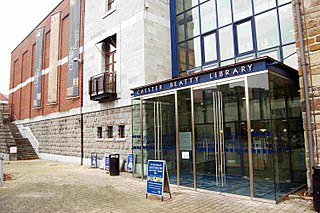
The Chester Beatty is a museum and library in Dublin. Formerly known as the Chester Beatty Library, it was established in Ireland in 1950, to house the collections of mining magnate, Sir Alfred Chester Beatty. The present museum, on the grounds of Dublin Castle, opened on 7 February 2000, the 125th anniversary of Beatty's birth and was named European Museum of the Year in 2002.

The Book of Dimma is an 8th-century Irish pocket Gospel Book originally from the Abbey of Roscrea, founded by St. Crónán in County Tipperary, Ireland. In addition to the Gospels of Luke and John, it has an order for the Unction and Communion of the Sick. The surviving illumination of the manuscript contains a number of illuminated initials, three Evangelist portrait pages, and one page with an Evangelist's symbol. The pocket gospel book is a distinctively Insular format, of which the Stowe Missal and Book of Mulling are other leading examples.

The National Museum of Ireland is Ireland's leading museum institution, with a strong emphasis on national and some international archaeology, Irish history, Irish art, culture, and natural history. It has three branches in Dublin, the archaeology and natural history museums adjacent on Merrion Square and Kildare Street, and a newer location at the former Collins Barracks, and one in County Mayo relating to country life.

Roscrea is a market town in County Tipperary, Ireland, which in 2016 had a population of 5,446. Roscrea is one of the oldest towns in Ireland, having developed around the 7th century monastery of Saint Crónán of Roscrea, parts of which remain preserved today.

The National Library of Ireland is the Republic of Ireland's national library located in Dublin, in a building designed by Thomas Newenham Deane. The mission of the National Library of Ireland is 'To collect, preserve, promote and make accessible the documentary and intellectual record of the life of Ireland and to contribute to the provision of access to the larger universe of recorded knowledge'

A cumdach or book shrine is an elaborate ornamented metal reliquary box or case used to hold Early Medieval Irish manuscripts or relics. They are typically later than the book they contain, often by several centuries. In most surviving examples the book comes from the peak age of Irish monasticism before 800, and the extant cumdachs date from after 1000, although it is clear the form dates from considerably earlier. The majority are of Irish origin, with most surviving examples now in the National Museum of Ireland ("NMI").

The term "Celtic Rite" is applied to the various liturgical rites used in Celtic Christianity in Britain, Ireland and Brittany and the monasteries founded by St. Columbanus and Saint Catald in France, Germany, Switzerland, and Italy during the early middle ages. The term does not imply homogeneity; the evidence, scanty and fragmentary as it is, is in favour of considerable diversity.

The Stowe Missal, which is, strictly speaking, a sacramentary rather than a missal, is a small Irish illuminated manuscript written mainly in Latin with some Old Irish in the late eighth or early ninth century, probably after 792. In the mid-11th century it was annotated and some pages rewritten at Lorrha Monastery in County Tipperary, Ireland. Between 1026 and 1033 the manuscript was encased within a protective cumdach, which was refurbished and embellished a number of times in the late medieval period, in particular before 1381, the year of death of Pilib O'Ceinneidigh, Lord of Ormond, who then had possession of the shrine.
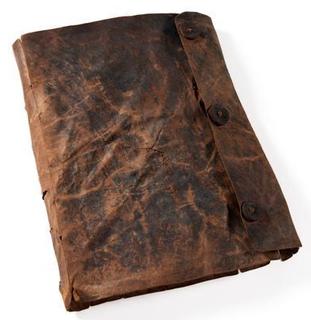
The Faddan More Psalter is an early medieval Christian psalter or text of the book of Psalms, discovered in a peat bog in July 2006, in the townland of Faddan More in north County Tipperary, Ireland. The manuscript was probably written in about 800 CE in one of a number of monasteries in the area. An interesting feature is that the inside of the leather cover is lined with papyrus, probably as a stiffening. It has been suggested that this points to links between the Irish and Coptic churches at the time, but that idea is not sustainable. Papyrus was used in Rome: all papal bulls until the eleventh century were written on papyrus; it was used in Francia until at least the eighth. Furthermore, the cover of the psalter was not originally made for this book, but is the re-used cover of another one. Its radiocarbon-dates do not match those of the manuscript, and there is a discrepancy in size between cover and manuscript.

Lorrha is a small village at the northern tip of County Tipperary, Ireland. It is located on a minor road between the R489 Birr to Portumna road and the N65 Nenagh to Portumna road about five kilometres east of the point where the River Shannon enters Lough Derg.
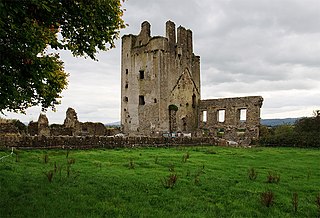
Kilcash Castle is a ruined castle off the N24 road just west of Ballydine in County Tipperary, Ireland. It is in the care of the Irish State. The Butler dynasty has important links to the area.
The Stowe manuscripts are a collection of about two thousand Irish, Anglo-Saxon and later medieval manuscripts, nearly all now in the British Library. The manuscripts date from 1154 to the end of the 14th century.

Abbeville is a townland in the Barony of Ormond Lower, County Tipperary, Ireland. It is located in the Civil parish of Lorrha.

The National Museum of Ireland – Archaeology is a branch of the National Museum of Ireland located on Kildare Street in Dublin, Ireland, that specialises in Irish and other antiquities dating from the Stone Age to the Late Middle Ages.

The Breac Maodhóg is a relatively large Irish house-shaped reliquary, today in the National Museum of Ireland. It is thought to date from the second half of the 11th century, and while periods as early as the 9th century have been proposed, the later dating is believed more likely based on the style of its decoration.
Sir George Frederic Warner, FBA, FSA was an English archivist; he was Keeper of Manuscripts and Egerton Librarian at the British Museum from 1904 to 1911.
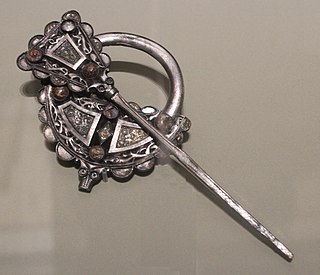
The Roscrea brooch is a 9th-century Celtic brooch of the pseudo-penannular type, found at or near Roscrea, County Tipperary, Ireland, before 1829. It is made from cast silver, and decorated with zoomorphic patterns of open-jawed animals and gilded gold filigree, and is 9.5 cm in height and 8.3 cm wide. The silver is of an unusually high quality for Irish metalwork of the period, indicating that its craftsmen were both trading materials with settled Vikings, who had first, traumatically, invaded the island in the preceding century, and had absorbed elements of the Scandinavian's imagery and metalwork techniques.

The Soiscél Molaisse is an Irish cumdach that originated from an 8th century wooden core embellished in the 11th and 15th centuries with metal plates decorated in the Insular style. Until the late 18th century, the shrine held a now-lost companion text, presumed to be a small illuminated gospel book associated with Saint Laisrén mac Nad Froích, also known as Molaisse or "Mo Laisse". In the 6th century, Molaisse founded a church on Devenish Island in the southern part of Lough Erne in County Fermanagh, which the cumdach is associated with.
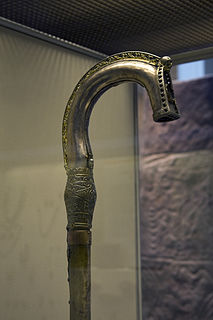
An Insular crozier is a type of processional bishop's staff (crozier) produced in Ireland and Scotland between c. 800—1200 AD in the contemporary Insular style. They can be distinguished from mainland European or English types by their curved crooks and pendant drop at the terminal. A number of later examples, as well as earlier croziers reworked during the 11th century, include features characteristic of the Romanesque style.

The Clonmacnoise Crozier is a late 11th century Insular crozier associated with Clonmacnoise, a ruined monastery on the River Shannon in County Offaly, Ireland. Usually linked with St. Ciarán of Clonmacnoise, it is thought to have been comissioned by the abbot Tigernach Ua Braín.




















